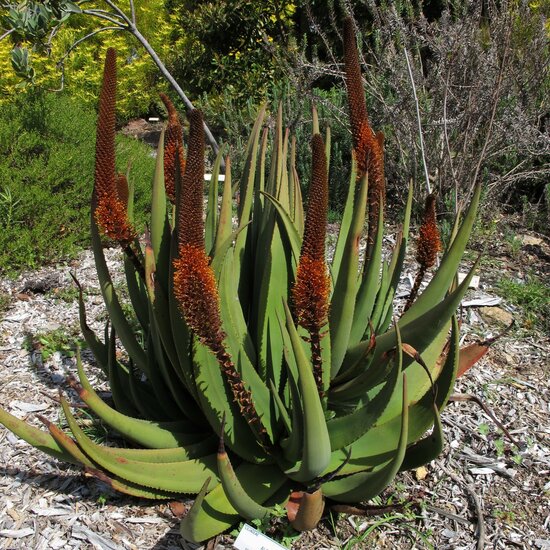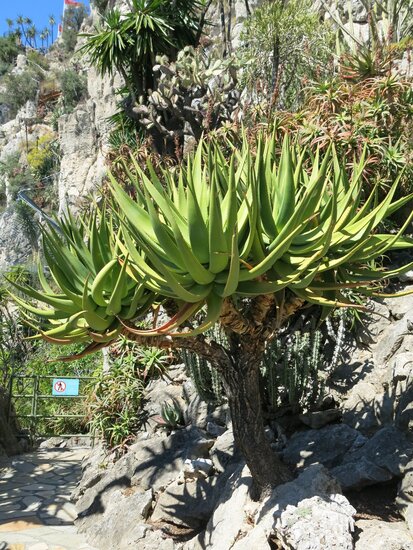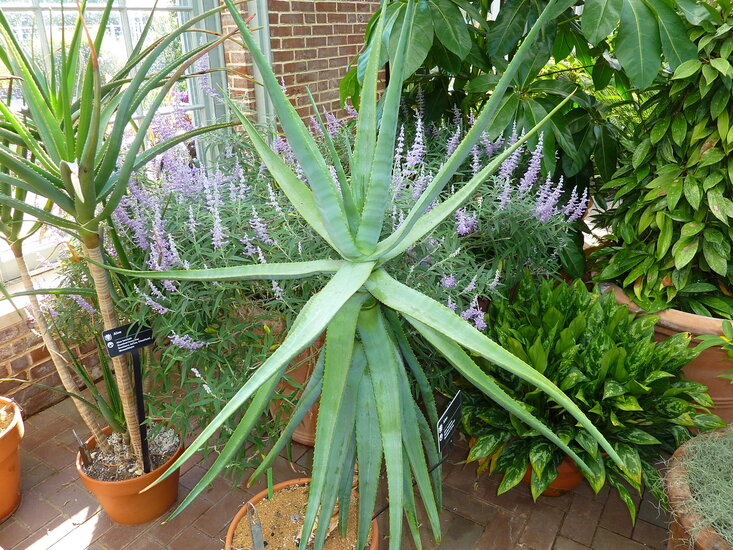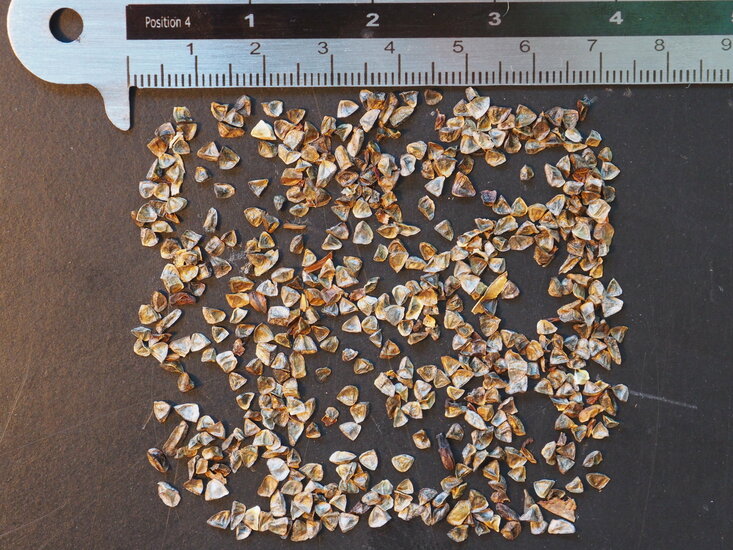Do you have a question about this product?
Ask us your question








Product description
This Aloe species has a spectacular inflorescence with hundreds of orange-brown flowers. They contain much nectar with an uncommon brown color and attract bees for pollination. Often the inflorescence grows somewhat sinuous, resembling a cattail. Hence the Dutch (and English) name for this species. Originally, the cat's tail aloe grows in the northeast of South Africa and is found there mainly in dry, rocky areas. Multiple leaf rosettes are formed with long leaves that have a serrated leaf edge. As the plant ages, it will also form a trunk from the fallen leaves. This gives it a tree-like appearance at a later age and in South Africa it can reach a height of 3 meters.The plant likes a sunny position and a well-drained, sandy soil. It can withstand a few degrees of frost, but is better off overwintering in a cool, frost-free location. In the winter months it needs very little watering, while in the summer it is good to do this with some regularity (as soon as the soil is completely dry).
Sowing description: soak seeds in water for 24 hours and then sow shallowly in a mixture of seed soil and sand (1:1). Cover seeds barely with soil and cover the pot/tray with foil or glass. Let germinate at 22-26 degrees Celsius.
Product specification
Family:
Asphodelaceae
Scientific name:
Aloe castanea
Common name:
Cat's tail aloe
Native to:
South Africa
Sowing time:
All year round
Difficulty level:
Intermediate
Minimum temperature:
-5 degrees Celsius
Do you have a question about this product?
Ask us your question
Product specification
Family:
Asphodelaceae
Scientific name:
Aloe castanea
Common name:
Cat's tail aloe
Native to:
South Africa
Sowing time:
All year round
Difficulty level:
Intermediate
Minimum temperature:
-5 degrees Celsius
Add review
Write a review about this product.
Reviews
No reviews yet



